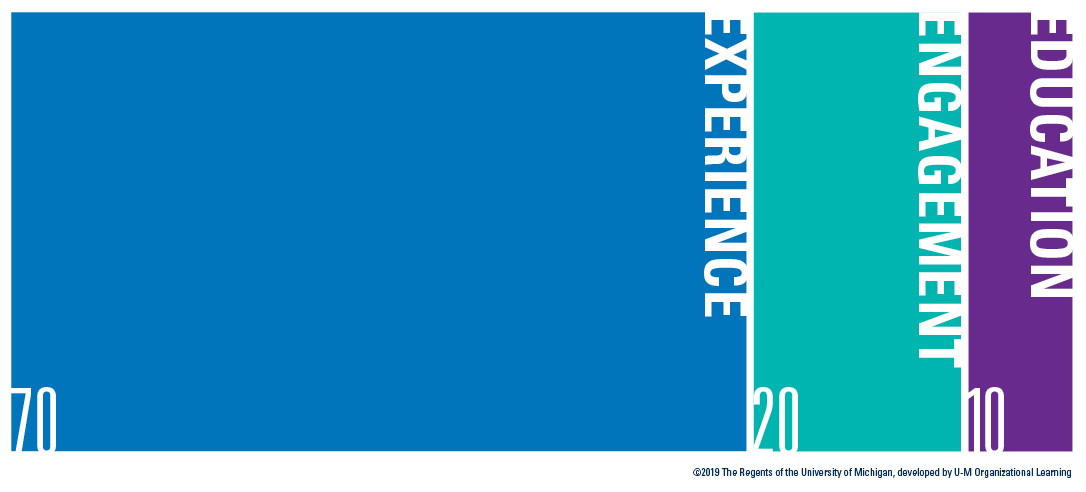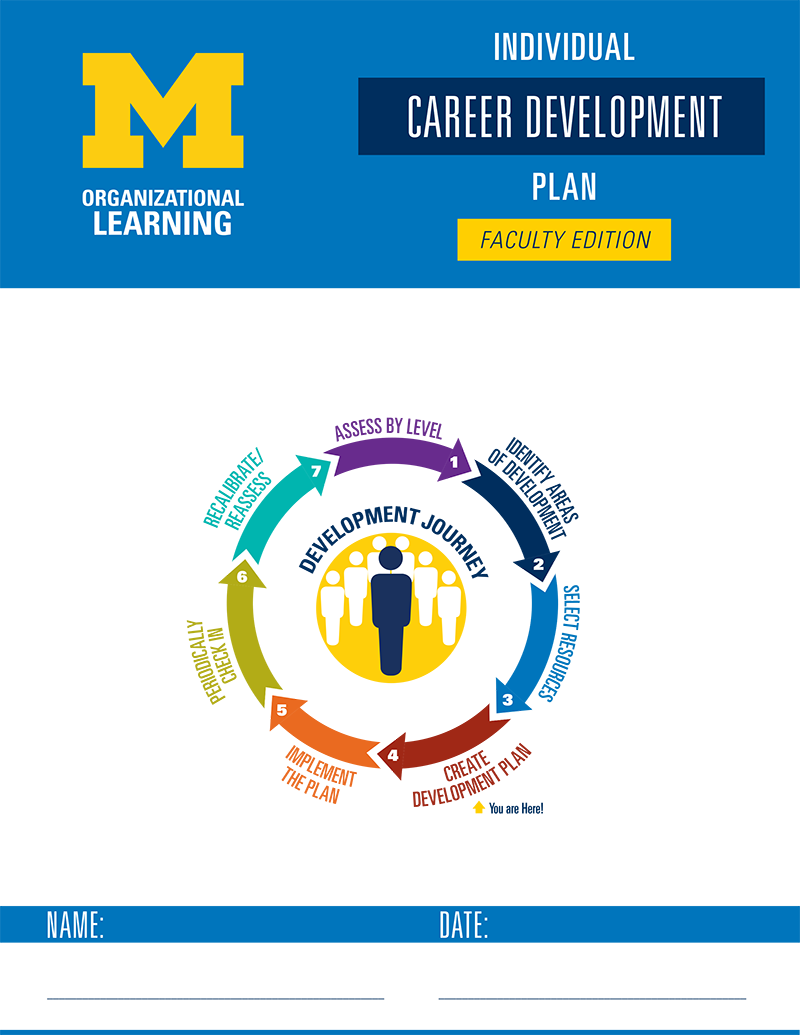Michigan Expectations Model
The Michigan Expectations Model (MEM) identifies 12 benchmark behavioral standards that all university faculty and staff should demonstrate. The goals of the MEM are to support our shared mission and equip faculty and staff with an understanding of the behavioral expectations needed for success at the University of Michigan. These behavior standards, called “expectations,” will be referenced and used in a variety of ways including customer care, hiring, professional development, and daily conduct. The model is a framework for development and performance management. It is organized into four domains, each with a set of three corresponding expectations.
Michigan Expectations Model Graphic

Development Approach
Our learning and development strategies follow a 70-20-10 approach:
70 Percent: Experience
Seventy percent of an individual's greatest learning moments come from experiences or on-the-job learning. Examples include:
- Stretch/challenging assignments
- Special projects
- Volunteer/community service
- Rotational assignments
20 Percent: Engagement
Twenty percent of an individual's greatest learning comes from engagement through mentoring and networking. Examples include:
- Peer-to-peer and formal networking
- Community of practices
- Career/performance discussions
10 Percent: Education
Ten percent of an individual's greatest learning comes from education or formal learning experiences like classroom training, web-based training or industry conferences. Other examples include:
- Instructor-led courses
- Self-study
- Conferences
- Forums
- E-learning
- Books
70-20-10 Development Approach Graphic

The Individual Career Development Plan (ICDP) is a tool for faculty and staff that utilizes the Michigan Expectation Model and the Michigan Development Approach to assess where they are currently, identify areas of development, and create a personalized plan for their professional and career development.

Within the ICDP goal-setting section, there are examples for Research and Leadership goals. This medical school-specific example is for our clinical faculty:
GOAL: Clinical Focus for Early Career Faculty
Example Goal: Grow my clinical area of expertise locally and nationally by the end of my fifth year as faculty
MEM Expectation: Lead Innovation and Change
EXPERIENCE (70%)
Example: Work with my colleagues to improve clinical practice and understand best practices and beyond for this patient population
ENGAGEMENT (20%)
Example: Meet with stakeholders and work on improving team-building skills
EDUCATION (10%)
Identify area of patient need and what the infrastructure should look like
